DIY faux-frosted glass doors

I got this idea from the plastic adhesive window coverings that Sarah Gaffney used in Sunset magazine’s 2008 Menlo Park Idea House. The window coverings (see below) from British designer Emma Jeffs are sold by Design Public. Sarah wrote that they’re like wallpaper for your windows. Just add water and apply. (This post contains affiliate links. If you use these links to buy something, I may earn a small commission. You can read my full disclosure here.)
Above: White Orba adhesive film. Below: White Otto Tile adhesive film.
I wish this project were just as easy. It took me hours and hours to do — and I don’t like it. That is, I don’t like how Plan A turned out — mostly because I apparently got a defective roll of clear Con-Tact paper (see the streaks?). Plus, doesn’t it look like someone took a steamy shower inside of there? It was time for Plan B. Thanks to a can of frosted glass finish, it looks much better now.

How to create faux frosted glass
SUPPLIES & TOOLS
INSTRUCTIONS

1. Clean the glass well. Any speck of dust will create a bubble in the Con-Tact paper.

2. Peel a few inches of the backing off, stick that edge to the edge of your glass, and start smoothing it down side to side. Keep about an inch overlap on all sides. Smooth down as you unroll a few inches at a time. When you get to the end of the glass, leave an overlap and cut the roll off. If you miss a bubble, pierce it with the tip of your craft knife and smooth it down.

3. Run your fingernail along the edge to get the paper to stick right up to the wooden frame.

4. Trim along the edges right up against the frame.

5. Peel off the excess.

6. Decide what pattern you’re going to create with the stencil. Trace it using a wet erase marker, which is easily wiped off but won’t smudge as readily as dry erase marker.

7. Now this is the time-consuming part. Cut out each piece with a craft knife.

8. Lift out the pieces using the tip of your knife.

9. Wipe off the excess ink with a damp rag. This is the end of Plan A.

10. Spray the stenciled portions with the frosted glass finish. Shake the can well. Hold it 10 to 12 inches from the glass. Apply even layers in a side-to-side motion. For a deeper finish: Let the first coat dry, then apply a second coat. Let dry. (I covered the exposed shelving with the discarded Con-Tact paper backing.)

11. Peel off the Con-Tact paper. Voilà: Plan B. If you change your mind later, the finish can be removed with lacquer thinner — or easily scraped off with a box-cutter blade.

Share this story
Reader Gallery
Made this project? Email your photo(s) to monica (at) craftynest (dot) com, and I’ll share your version here!



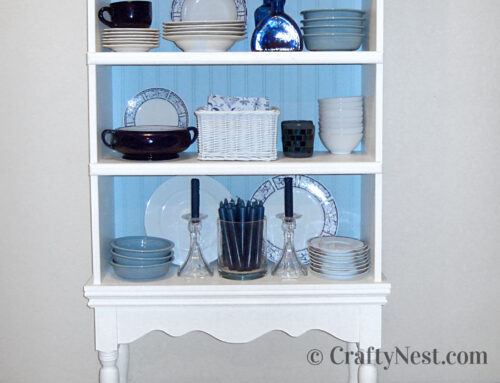
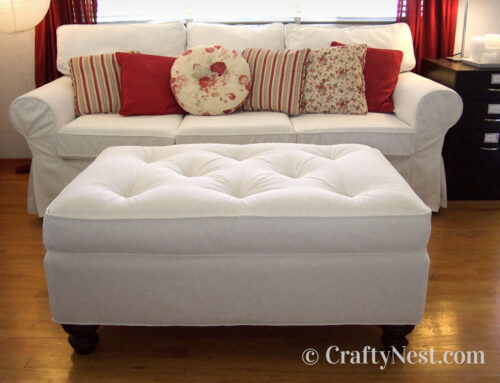
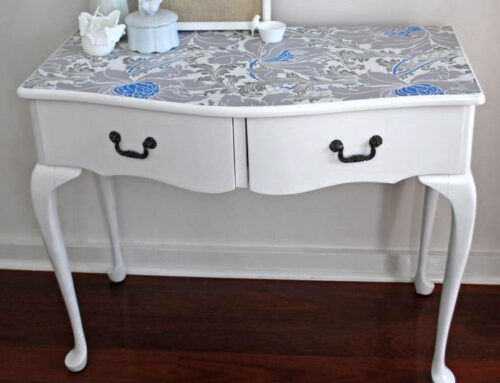
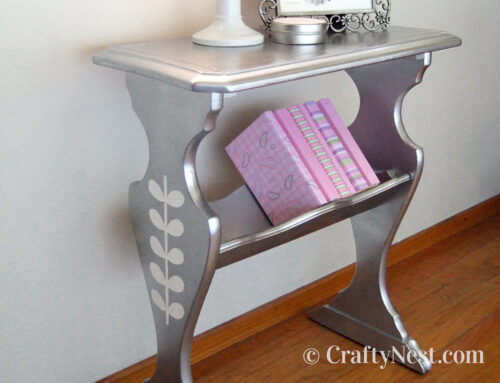
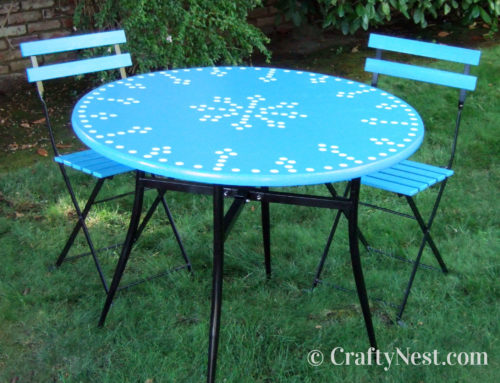
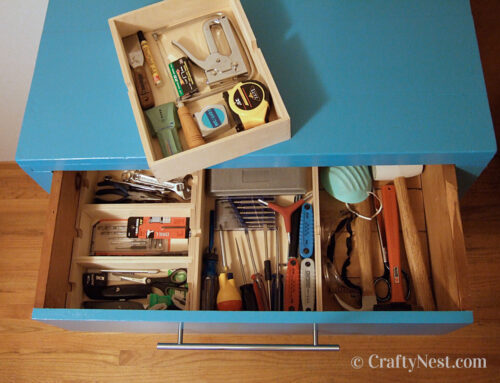
Leave A Comment